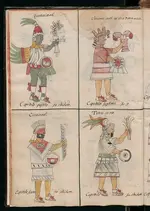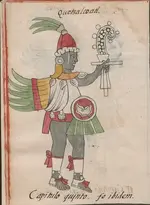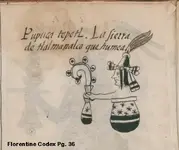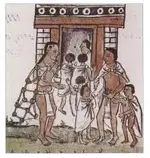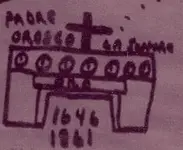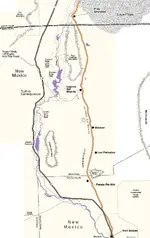Hey people, look whr I found
######
The folowing is from
Treasure Hunting
The Best Treasure Hunting Blog on the net
okietreasurehunter@msn.com
Pedro Navarez and the Caballo Mountains
Mexico City
Convent of St. Augustine
February 5, 1650
“Ask in Paso Del Norte where the Caballo Range is. You will find it four days by horse at a good pace up the river and not very far therefrom. Most of these mountains are of equal height and they have two large passes and a small amount of juniper trees. Coming along the King’s Highway (El Camino Real) from the pass, one will see on the left a range of mountains [this is after crossing the river at the pass and entering upon the first leg of the journey], to the right a flat plain (Jornada del Muerto) where the naked eye cannot circumscribe. There is a small hill a great distance from the road. [This is the point of the rocks] These marks you will find to your right where the point of the compass points to the sunrise. This range has two wide gaps which end in two arroyos, one running in the direction of the sunrise and the other toward sunset. The two have many ash trees, one having more than the other. In the gap where the sun rises, look for a small spring. The gap is not very big, a city could be built in the plain. The spring is not far from this gap, and it is well covered with juniper trees, stones, earth and large and small rocks on top. Look carefully at this spring, for it contains great riches. You can take out much gold beneath its surface. And from this spring count 250 varas toward the brow of the mountain, keeping to the level ground. Here you will find a stone with a very large cross chiseled upon its face. The stone is not of this region, having been brought in by mule train. From this point, count 100 varas and examine a small piece of ground closely. It has a few rocks so look carefully at its condition. Here you will find silver bars, there should be 18 atajas. Remove the boards under the bars and take 11 more atajas in finished silver. These marks are to the right before entering the gap, at the point of the compass where the sun rises. When you have finished this work, return to the spring in order that you may climb the mountain to your left. You will look for a very deep cave. There are 90 atajas of silver buried in this cave. I warn you to be careful and not to make a mistake for there are two other caves, but this one is the deepest of the three. The three are where the sun sets and I must tell you that there are some smaller caches and little springs, but all of them have been covered. And if any of these markings should be destroyed, then proceed with the utmost care in carrying out of the task. Return to the spring and climb the mountains to the right in the direction of the rising sun. Not very high up you will find a high rolling mesa, a placer, Here you can cut the copper with an axe and I believe that the spring comes from here. Other signs you will also find. In some places, painted figures with many writings engraved in copper. Therefore I urge you to search well for these marks. Thousands of families would be helped thereby.”
This is a letter in it’s entirety that was written to a padre in Mexico City by Pedro Navarez, also know as El Chato. El Chato was a Spanish deserter who spent his time robbing the Spanish mule trains of their own plunders. It is estimated that over the ten years of plundering the treasure trains of the Spanish, Pedro Navarez stole and hid treasure that today would be worth one hundred million dollars or more. This guy new how to steal!
Pedro began his illustrious career around 1639 and lasted until 1649 when he and his band of thieves were either caught or killed. His band of merry men were considered to be ruthless predators and extremely dangerous and very costly to the Spanish government. After being captured by the Spanish Pedro confessed to burying more than 20 caches of treasure during his ten year career. He apparently told the Spanish where a few of these were however, while waiting in jail for his death sentence to be carried out Pedro wrote the above letter to a padre so that some his spoils might be used for good. I guess maybe he was trying to atone for his past indiscretions?
In case you are wondering, an “ataja” is said to be a string of approximately eight mules. If a mule can carry a minimum of 135 pounds and you have eight mules per ataja then that would mean you are talking about over 1000 pounds of silver per ataja. In his letter Pedro said he hid a total of 119 atajas of “finished silver” bars. This would be more than 119,000 pounds of silver!! How much is silver going for today?
(Just out of curiosity, I checked and the price of silver is $15.81 per ounce. So 119,000 pounds would have 1,904,000 ounces. At $15.81 per ounce you are talking about $30,102,240.00. I’d say that’s worth a hike or two into the New Mexico mountains!)
Posted by Ron at 12:03 PM
Email ThisBlogThis!Share to TwitterShare to FacebookShare to Pinterest
No comments:
Post a Comment
Newer Post Older Post Home
Subscribe to: Post Comments (Atom)
map
